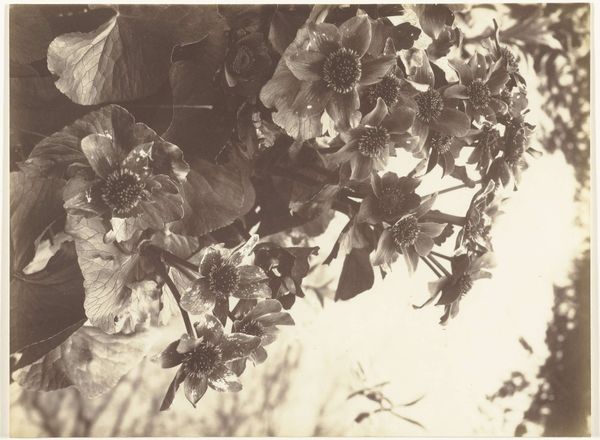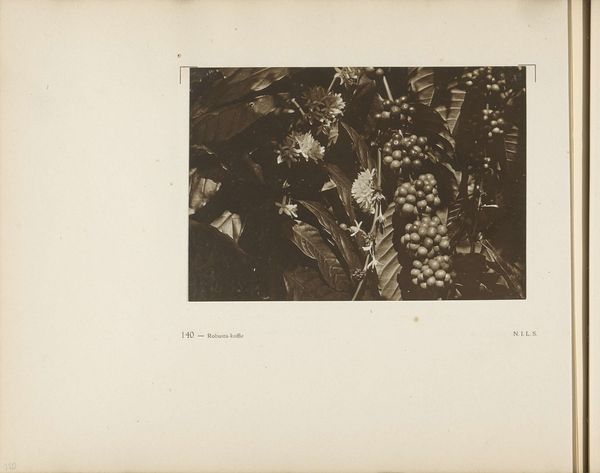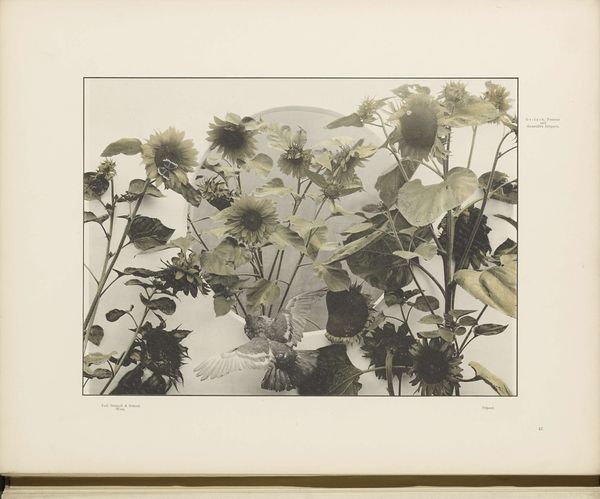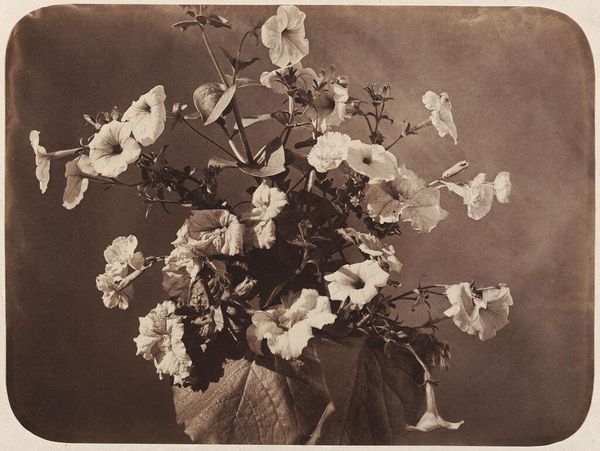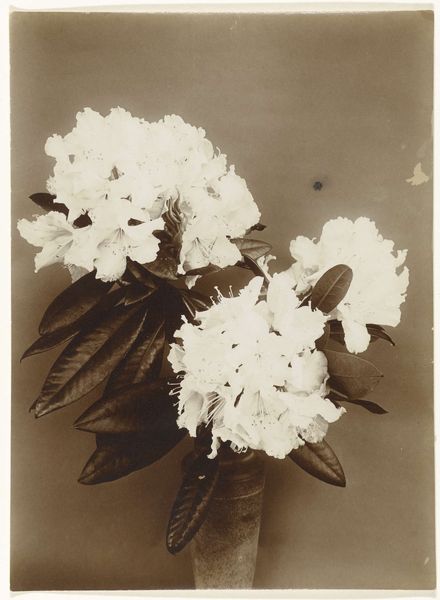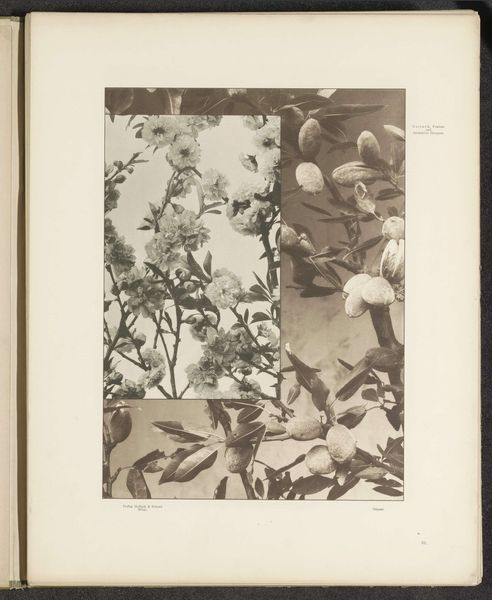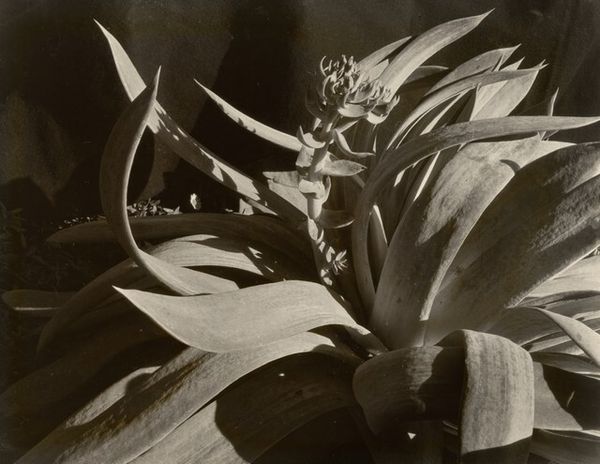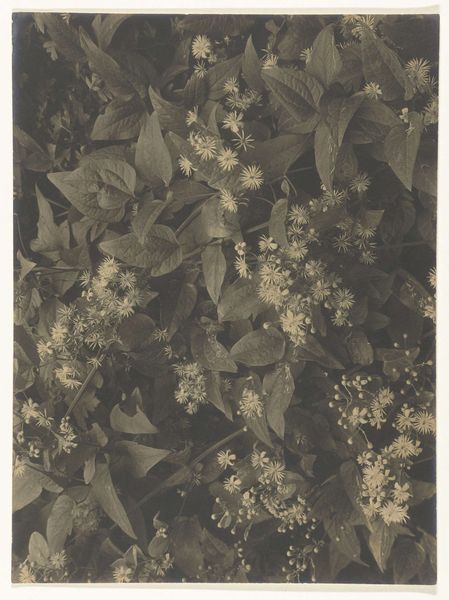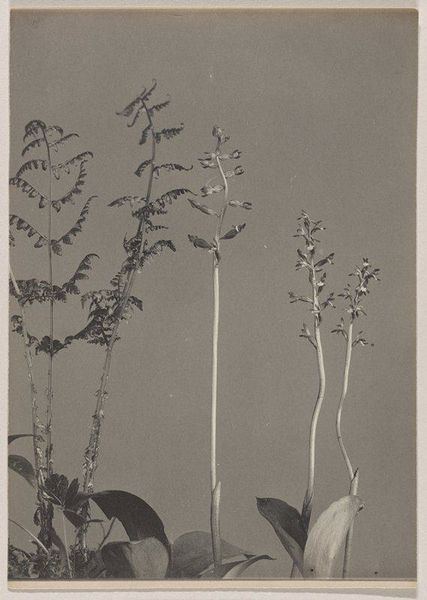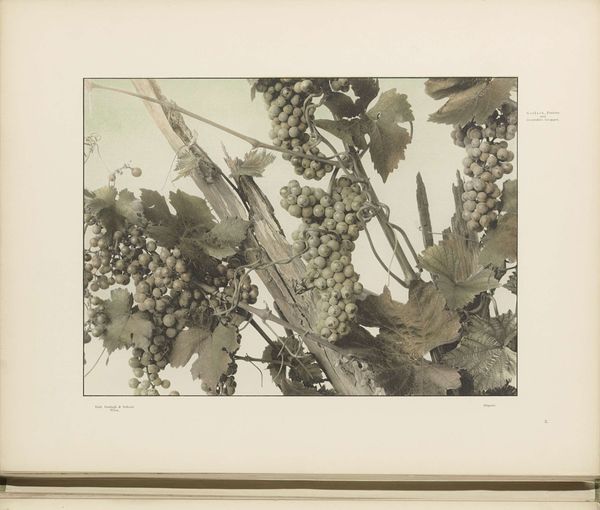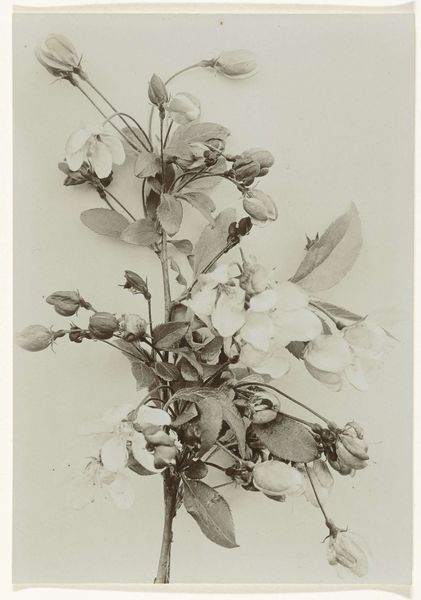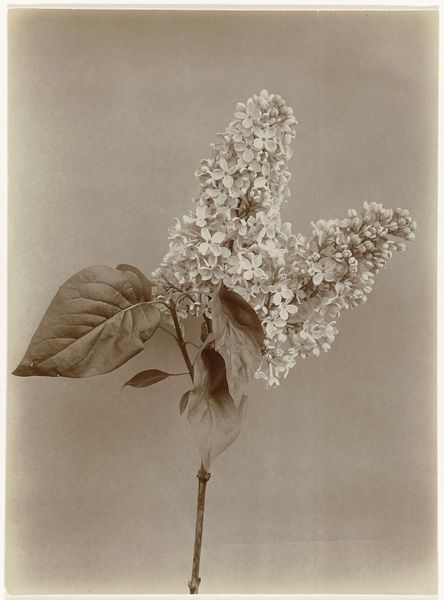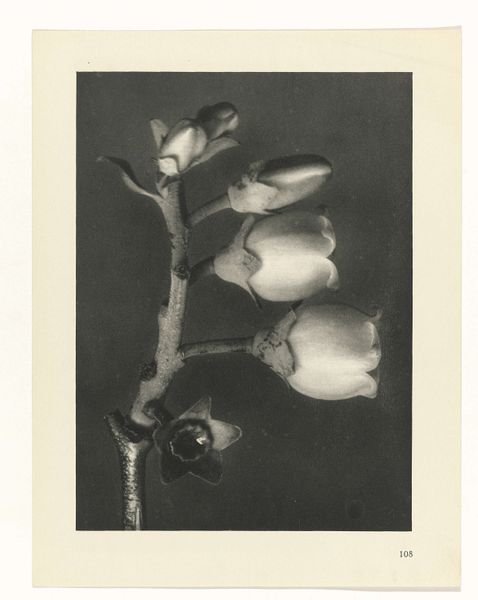
photography
#
photography
#
botanical photography
#
realism
Dimensions: height 168 mm, width 225 mm
Copyright: Rijks Museum: Open Domain
Curator: This striking photogravure is entitled "Branch of a Chestnut Tree," attributed to Richard Tepe, and it likely dates from around 1900 to 1930. Editor: It has an intriguing, almost mournful quality. The muted sepia tones contribute to a sense of nostalgia, of looking back at a world slightly removed from our own. Curator: I think Tepe's decision to capture such an intimate study of the tree is significant. Chestnut trees, historically symbols of justice and honesty, experienced a blight around this time, altering landscapes and collective memory. It’s like he’s documenting something precious that’s being threatened. Editor: Absolutely, that resonates strongly. And the leaves, with their distinctive, almost hand-like shape, evoke a sense of offering, of fragility. The chestnut blossom is symbolic, often associated with sincerity and a youthful exuberance. Combined with the photographic treatment, there is a striking contrast between documentation and emotion. Curator: It raises interesting questions about access, doesn't it? For many marginalized communities at the turn of the century, depictions of nature were often interwoven with oppressive land use policies and exclusion from idyllic spaces. This image prompts reflection on whose relationship with nature was being celebrated—and whose was being ignored or suppressed. Editor: I hadn't considered that explicitly, but that's such a critical lens through which to view this piece. Considering its cultural associations, one can see it signifying resilience and adaptation too. Chestnut trees and their symbolism has been used throughout history as a reference to social progress, class, labor, etc. And it asks who is tending to this tree. The meticulous photographic process itself underscores that sense of dedicated attention. Curator: Tepe's botanical photography invites viewers to look critically at assumptions about nature as apolitical, urging engagement with complex ecological and socio-economic factors in both art and nature. Editor: Well, it certainly opens new avenues for thought, highlighting not only the aesthetics, but the emotional symbolism inherent within. A quiet piece that certainly encourages further thought on cultural meanings within botanical renderings.
Comments
No comments
Be the first to comment and join the conversation on the ultimate creative platform.
